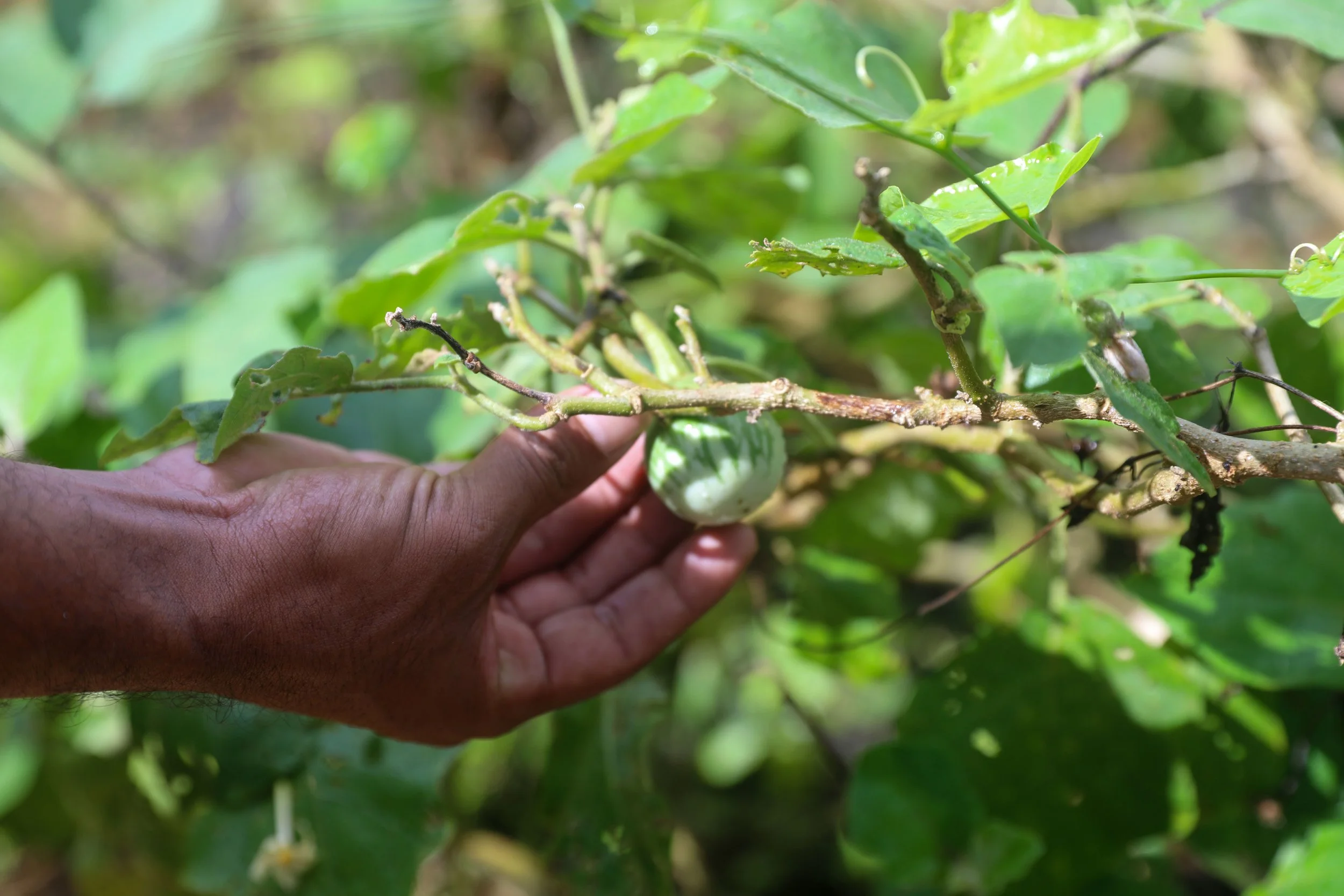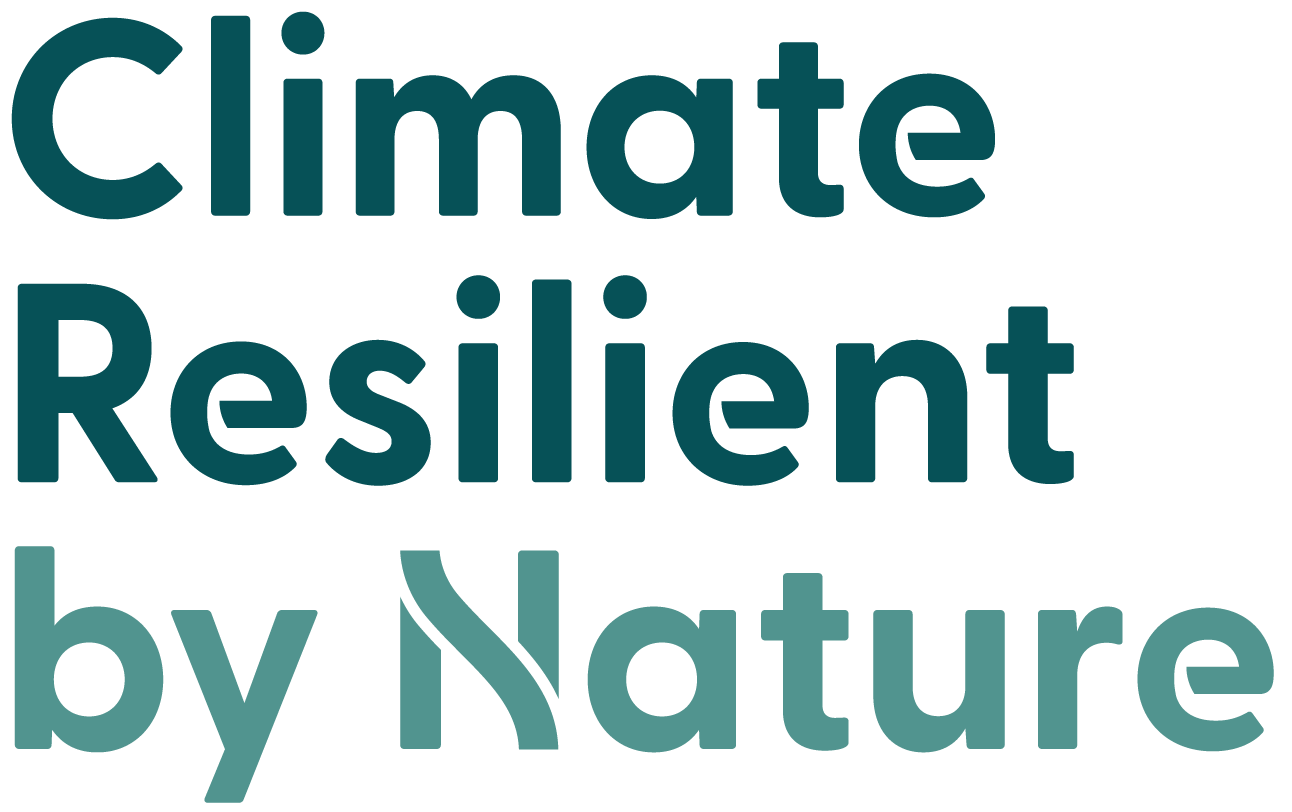Roots of resilience
Timorese farmers are embracing agroforestry as a nature-based solution to climate change and are reaping the benefits in a Climate Resilient by Nature supported project implemented by Caritas and Catholic Relief Services (CRS).
The diversity and contrasts of Timor-Leste
It’s a windy and bumpy road to Bualale, a rural farming community in Baucau municipality on the eastern side of Timor-Leste. The three-hour drive from the capital, Dili, passes by swathes of mangroves, through misty mountains and veers around the edge of cliffs that look out at the vast Banda Sea where, if you’re lucky, you might see migrating whales, or perhaps a crocodile.
Timor-Leste is a biodiversity hotspot home to an array of endemic wildlife and an estimated 41,000 plant species across its varied and significant ecosystems.
As much as Timor-Leste is a land of diversity, it is also one of contrast. En route, traditional, sacred houses known as Uma Lulik with high thatched roofs dot the landscape before the road passes rock and sand quarries, newly dug out of the steep and rugged mountainside .
Upon arriving at Bualale suco (village), the rains this time of year have made the community’s farms and its surrounding forests a verdant green. However, the wet season can come with flooding and landslides and is followed by a dry season, which can lead to drought and crop failure.
Here, tesi ai no sunu rai (slash-and-burn agriculture) which involves the cutting and burning of trees and vegetation, has been a low-cost and quick method for farmers to clear land for cultivation. The land is farmed for several years until the soil's fertility decreases, and a new plot is required. The intensification of this practice, as well as deforestation and the growing extremes of each season, presents many challenges for farming communities in Timor-Leste. This has led to degraded soil, weakened forest ecosystems and poor agricultural yield.
“Communities here really depend on the agriculture,” Agustinho Ximenes, Agriculture Program Manager at Catholic Relief Services (CRS) explains. “The impact of climate change is becoming more and more. They [communities] are really affected because of the drought and their farm may fail in harvesting and production. There's also flooding and landslides that will affect production too.”
Transforming rural communities
This is why Climate Resilient by Nature has partnered with Caritas and CRS to support nature-based solutions in Timor-Leste. Through the Transforming Rural Lives through Adaptation and Carbon Capture (TRACC) project, communities are transitioning to agroforestry practices that build resilience.
“The principle behind implementing agroforestry is that we don't want the farmer to just depend on one crop or monoculture. Because if they only monocrop, and that one crop fails, then they will have nothing. So that's why we try to do intercropping, so that they can harvest different crops and in different seasons,” adds Agustinho.
Agroforestry involves the intentional planting and maintenance of trees in agricultural landscapes. Through the project, the planting of new trees aims to rehabilitate degraded forest ecosystems and deliver benefits to local farmers. Trees do this in many ways. For instance, more trees in a farmer’s fields can increase the soil’s ability to capture and retain moisture and replenish groundwater. At the same time, this contributes to improved crop yields, which supports food security and diversifies income streams, while supporting biodiversity.
“Agroforestry is actually a practice farmers and the community have done before,” explains Agustinho. To build on this, the project offers technical support so more farmers can practice this method and diversify their crops in response to climatic and environmental changes.



Gilermina, a Bualale farmer who used to practice slash and burn agriculture, has experienced first-hand the challenges of farming in a changing climate and the need for adaptive approaches.
“During the rainy season, soil erosion happens, and strong winds also uproot big trees, damaging our seedlings,” explains Gilermina. “During dry seasons, the water levels reduce and some seedlings die.”
“Before I joined this program, I only planted bananas, taro, cassava and corn. We wanted to join the program because before we just planted randomly, but now we plant according to a better system.”
Gilermina attended agroforestry training and now plants a variety of trees that serve a range of purposes. This includes ‘protection’ trees that create a wind barrier to protect growing saplings and help stabilise the soil and reduce erosion. She also implements various mulching and pruning techniques.
“The goal of planting [these] trees is to ensure the soil doesn’t erode easily—it stays intact and doesn’t shift,” she explains. “Also, the trees we plant can already produce fruits. We can sell some and consume some ourselves.”
These food trees represent another category of agroforestry trees and include those that are fast-growing and will bear fruit quickly, like papaya. Some food trees have multiple roles to play, like banana trees that are also valuable for mulching, as their fronds and trunks help preserve soil moisture in the dry season. And lastly, there are trees like avocados, which although take longer to fruit will deliver larger harvests and offer the potential for significant future income.
And there are other benefits too.
“The benefits we get from agroforestry are that we can plant various crops, and many birds now come to our fields,” observed Gilermina.



In Viqueque municipality, Jose, a farmer who has also transitioned from slash and burn to agroforestry, has similarly observed Critically Endangered yellow-crested cockatoos returning to the area, as well as other changes.
“The trees benefit me a lot—they help keep the land fertile, so when I plant food, it grows well and sells at a high price,” says Jose. “Also, the trees retain moisture. Before I planted, the soil was dry, but now it holds water because of the many seedlings I planted.
As a result, we can sell [harvests] and earn money to support our children's schooling.”
Community conservation grounded in tradition
“In Timor-Leste, there is a saying, ‘ita labele lori foho ba tasi’.”, shares Agustinho. “This essentially translates to, ‘we can’t allow the mountain to meet the sea’.” This reflects the traditional practice of natural resource management, known as Tara Bandu. In the case of this old adage, protecting the forests that separate the mountains from the sea is critical to maintain balance and protect nature at large.
Practically, Tara Bandu is a customary law that sets regulations and rules around resource use that seeks to protects the connection between communities and their environment. Its enforcement relies on consensus building and is often marked by community-wide ceremonies. In the case of Bualale, the Tara Bandu approach is reflected in the move away from slash and burn in the interests of actively rehabilitating the environment.
“I see a big change in this village from 2022 to now,” says Gabriela, the Suco Chief (village head) of Bualale. “Now, it's been three years since the community burned the land.”
Gabriela believes this, along with the planting of a diversity of trees, has meant landslides have not been as damaging as in previous years.
To ensure these actions and impact continue, the next step for Gabriela involves formalising the Tara Bandu laws.
“Now we are working with the communities to implement Tara Bandu in this village to protect the communities' agroforestry,” says Gabriela. “The Tara Bandu prevents people from cutting down trees and burning land to prevent landslides. We do this to protect our nature and prevent landslides.
To prevent flooding and disasters in our village, we all must work together.”
Drawing on the tools provided by nature – trees and agroforestry practices – can offer a means for families to build their resilience and adapt to climate shocks and stresses while also diversifying food and income sources. Learn more about this project here.
Read more



